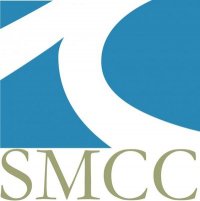Below is a summary of the abstract you submitted. Presenting author(s) is shown in bold.
If any changes need to be made, you can modify the abstract or change the authors.
You can also download a .docx version of this abstract.
If there are any problems, please email Dan at dar78@pitt.edu and he'll take care of them!
This abstract was last modified on April 4, 2022 at 3:37 p.m..

Bacteriophage are considered “the most abundant biological entities in the ocean” and temperate phage in this environment are a common occurrence (Paul et al., 2002). This life cycle, where a phage forms a lysogen with its bacterial host, can benefit both – allowing for gene transfer in bacteria, giving the host immunity and preventing infection from other phage, and even giving the host the ability to produce new toxins (Paul et al., 2002), while providing the phage with protection and ease of genetic reproduction when the host replicates. The cluster EE phage Gardevoir was isolated in the fall of 2020, as part of the SEA-PHAGES program, from biofilm on a marine sponge. Gardevoir infects a strain of Microbacterium isolated from marine mud. It is currently known as strain Casco Bay. Phage in the cluster EE infect species of Microbacterium, have very small genomes of at most ~17,500 bp with high homology, and tend to follow a strictly lytic life cycle (Jacobs-Sera et al., 2020). During the isolation of Gardevoir, distinct turbid halos were consistently noted surrounding each plaque – sometimes an indication of a temperate lifecycle. While known isolates have been strictly lytic the halos and some HHPred hits during the genome annotation warranted further investigation into the possibility of a temperate life cycle. A series of patch tests, prophage induction experiments, and qPCR were performed to determine that Gardevoir is a temperate phage. PCR primers were designed from the Gardevoir sequence in order to use an environmental DNA approach to search for new marine phage in cluster EE.
References Jacobs-Sera, D., Abad, L. A., Alvey, R. M., Anders, K. R., Aull, H. G., Bhalla, S. S., Blumer, L. S., Bollivar, D. W., Bonilla, J. A., Butela, K. A., Coomans, R. J., Cresawn, S. G., D'Elia, T., Diaz, A., Divens, A. M., Edgington, N. P., Frederick, G. D., Gainey, M. D., Garlena, R. A., Grant, K. W., … Hatfull, G. F. (2020). Genomic diversity of bacteriophages infecting Microbacterium spp. PloS one, 15(6), e0234636. https://doi.org/10.1371/journal.pone.0234636
Paul, J. H., Sullivan, M. B., Segall, A. M., & Rohwer, F. (2002). Marine phage genomics. Comparative biochemistry and physiology. Part B, Biochemistry & molecular biology, 133(4), 463–476. https://doi.org/10.1016/s1096-4959(02)00168-9
